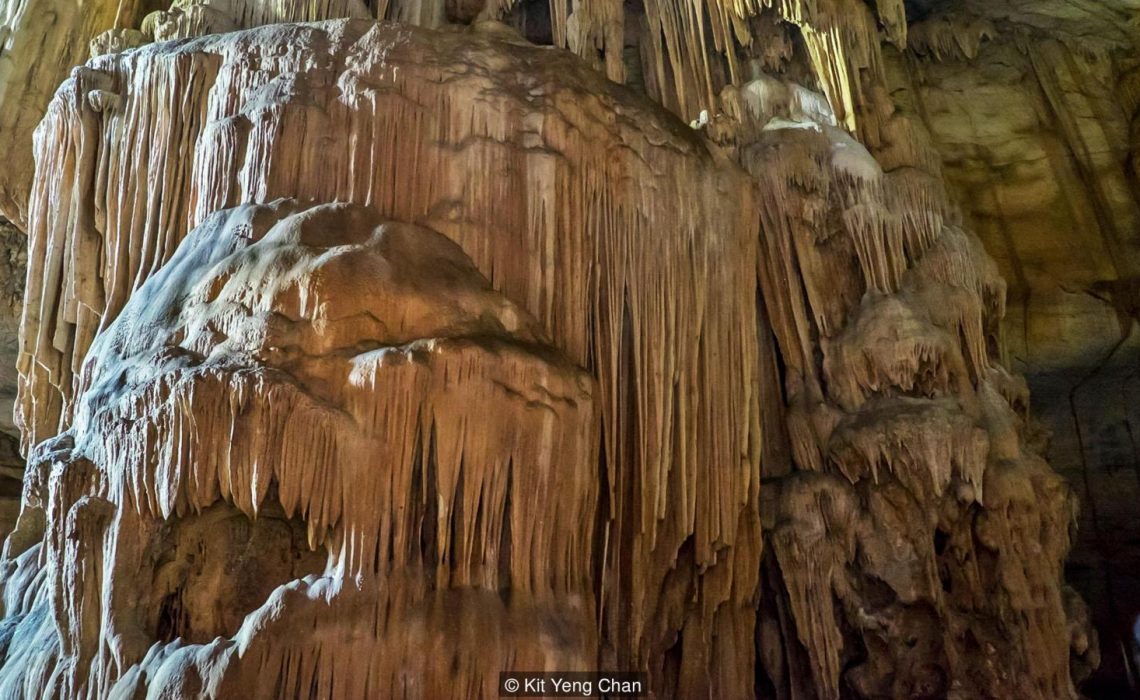
You might also like:
Lenggong Valley, lush historical plains in the peninsular Malaysian state of Perak, is a largely unknown heritage site, even to most Malaysians.
While tourism is slowly and surely being pushed, Lenggong Valley is the same unspoiled village it was before the UNESCO recognition. Tourists can soon expect eco-tourism home stays, floating chalets, deer farms and unique flora. However, it’s worth the trek up if only to witness spectacular pre-civilization artifacts.
Gua Puteri is a vision of stalactites and stalagmites. Pic: Kit Yeng Chan/BBC
Recently, the BBC ran a story on the valley, highlighting some of the caves that sit in the valley, including Gua Harimau, a prehistoric structure where remains of bronze tools, pots and skeletons were found two decades ago. Also worth stopping by is Gua Puteri, an underground cavity where stalactites dramatically fall.

The Perak Man is the best preserved prehistoric skeleton in the region. Pic: Kit Yeng Chan/BBC
One of the most surreal artifacts to be discovered during excavations was the 11,000-year-old Perak Man, the best preserved skeleton of that age found in the region. Visitors can view him up close at the Lenggong Archaeological Museum in the village of Kota Tampan. For access into the museum, visitors can e-mail the museum’s director for an entrance permit.
Despite its protected status and the valley being a goldmine for artefacts, little fanfare has surrounded Lenggong Valley and its offerings as a tourist hub. The area doesn’t appear in most Malaysians travel itineraries and has only two direct bus connections from Kuala Lumpur every day.
However, a site that contains as many stories as Lenggong Valley does is worth talking about, even if luxury hotels and planned tourist tours are temporarily absent.
The post Unfold two million years of human life at Malaysia’s secret World Heritage Site appeared first on Travel Wire Asia.
Source: travelwireasia.com



